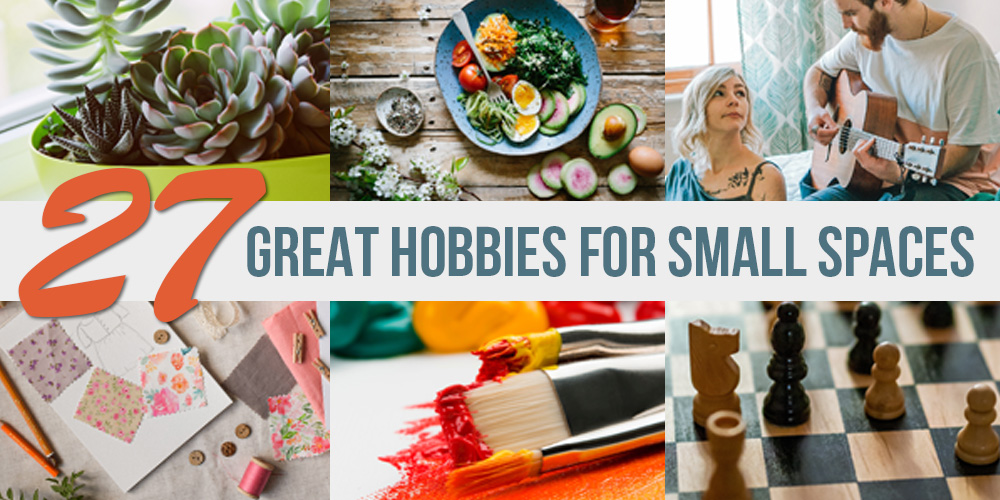
Building a tiny house, downsizing, organizing and simplifying are all time-consuming projects. Over the last several years, my tiny house journey has consumed a big chunk of my free time and focus. However, everyone needs a hobby or two, even when living in a small space.
Of course, I can only speak for myself and I realize not everyone enjoys the same great hobbies I do. Fun hobbies for me might not be the same as fun hobbies for you. So, explore these simple hobbies for small spaces and apply them to your own taste.
If there was an activity you enjoyed before you moved toward a minimalist way of living, chances are, you’ll still enjoy it. The only problem you face is that…well, hobbies often take up a lot of space.
I’ve known people with entire rooms dedicated to crafts: studios for art, sound rooms for recording and game rooms for playing. In a small space, you can still enjoy fulfilling and entertaining activities. If you’re looking for great hobbies to fit minimalist lifestyles, you simply need to shift your approach to your pastime of choice.
So before I get to the list of hobbies, here’s how to make almost any hobby work in a small space.
How to Pursue Your Hobbies in Small Spaces: 7 Tips to Help
1. Stay Organized
First and foremost, one of the keys to hobby success is staying organized. A huge, overflowing and messy workspace won’t fit into a minimalist lifestyle or a small space. If you love paper crafts, organize supplies into a small binder. If your hobbies involve computers and electronics, keep cords and supplies neatly tucked into a container or bin. Whatever your hobby, don’t neglect the organization of it.
2. Don’t Hold on to Leftovers
When you finish a project—a piece of art, a completed puzzle or a sewing project—don’t’ keep all the leftover scraps. Donate them, trade them or give them away. Use up only what you need for the project at hand. Storing extra bits takes up too much space. Besides, many of us forget about these items when we’re ready to start the next project.
3. Work on One Project and One Hobby at a Time
If you love model building, RPGs and fly tying, you may need to focus on one hobby at a time. Depending on your storage capacity and time constraints, it makes sense to focus your efforts in one area. This is a different mentality from the “I’m bored, move to the next source of entertainment,” approach many of us are familiar with. Instead of multitasking, mindfully focus on the single project at hand. This is what I’m trying to do this year, enjoy the hobbies I already have, not add new ones.
4. Scale Your Hobby to Your Space
Look at the hobby you love and scale it to your space. If you play an instrument, is there a smaller version you’d like to explore (guitar to ukulele or cello to violin)? If you enjoy woodworking, learning to carve and whittle give you a similar sense of satisfaction on a smaller scale?
5. Move Your Hobby Outdoors
Depending on the climate, some great hobbies fit in very well outdoors. Taking your easel and paints outside, for example, could give you a new subject matter to explore and eliminate the stress and clutter of an indoor studio. Similarly, there are many great hobbies like birdwatching and geocaching that require time outside.
6. Share Your Finished Product
If you’re a creative person, share your finished project with others. Many people build models or paint large canvasses or design, with nowhere to store the finished project. If you’ve got a talent you want to share, consider donating your work once it’s completed. You could even set up an online store, but keep in mind, turning your hobby into a business may require even more time, space and energy.
7. Focus on the Core Value of the Hobby
If you’re looking for a satisfying hobby to pursue, consider the core value of what you already enjoy. For example, if you love to design and build, could you put those same skills to work by exploring culinary arts, making models or miniatures, or gardening? If you’re analytical, would you find puzzle games, escape rooms or web development interesting? Many hobbies use the same values and traits, in different applications.
The List: 27 Great Hobbies for Small Spaces
Ready to get started with a new pursuit? Again, not every hobby fits every personality or aptitude, but here are some ideas for great hobbies that fit well with minimalist lifestyles and small spaces.
1. Gardening
Gardening is one of the oldest hobbies. It’s extremely useful—growing plants and herbs for food or to beauty your home and yard. If you’re leasing property, you may not be able to plant a full garden (or if you’re living in a space without a yard). Fortunately, there are container gardens and even hydroponics that require very little space to produce a bounty. Start with a few plants on a windowsill and let your green thumb grow.
2. Stitching & Sewing
Similar to paper crafts, stitching and sewing are great hobbies that can also spiral out of control with supplies and projects. If you’re working on a textile craft in a small space, it’s important to stick to one project at a time, keep your supplies organized and only store what you need for the project at hand. When it comes down to it, needles, thread, yarn and felting tools don’t require a lot of space. It’s the yards of fabric and skeins of yarn that take over a space.
If you enjoy handicrafts and stitchery, consider embroidery, needle felting, tatting, and crochet, which use minimal supplies. Cross stitch is another fabric craft that doesn’t call for a lot of space. Tutorials on these projects are found on YouTube or Craftsy.
3. Culinary Arts
Areas to explore are food preservation like canning, dehydration, and pickling. Bread baking is another popular small-space culinary pursuit. If the science of food fascinates you, explore nutrition or even molecular gastronomy.
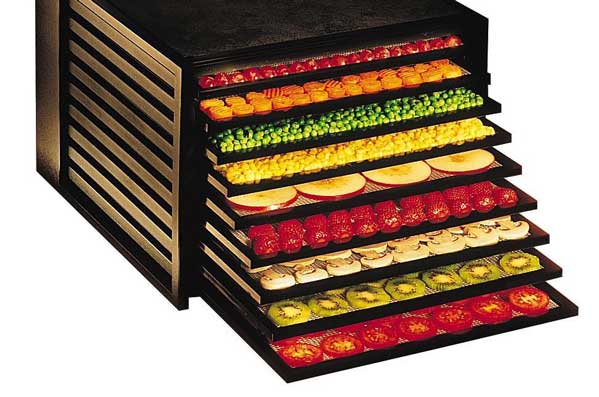
4. Woodworking
Woodworking and carpentry becomes a passion for many who build and craft their own home. Once the work is complete, you may realize continuing carpentry requires many supplies and large-scale storage. Rather than give up the skills, consider shifting your focus to small-scale woodworking. Whittling and wood carving are great hobbies that don’t require much space. The results of a skilled woodcarver’s work are truly stunning.
5. Gaming
The world of gaming is huge and encompasses a vast number of interests. Not all games are perfect for minimalist lifestyles and small spaces, but many are. Role playing games (RPGs) require little more than a dice set and a group of friends. Board and card games are another excellent options. Check out the International Gamers Award winners, to find the best games. Chess is another great option for beginners.
Video games are another popular hobby. Most gaming units are relatively small, including handheld devices like the Nintendo Switch (which is a handheld and console unit) or the Sony PlayStation Vita. You can also get started playing video games on your phone or computer. Online gaming offers the option to play with others around the world, right from your own screen.
6. Writing
If you’re living in a small, or minimalist space, you don’t need to give up your hobbies. With a few adjustments and modifications, you’ll enjoy plenty of great hobbies to fit your small-space lifestyle and help you relax and enjoy life.

7. Mindfulness Pursuits
Yoga, meditation, and spiritual exploration are excellent pursuits for small spaces. Many of these studies and practices help you explore your mind-body connection and learn to be present, connected and aware of your surroundings. Yet, most mindfulness pursuits require very little in the way of equipment or supplies. You can start with a book or by following yoga tutorial videos. You may also want to download a mindfulness app, such as Headspace.
8. Ham Radio
Amateur or ham radio is a popular hobby that’s been around for many years. It’s a way to communicate with people around the world (English is the universal language of ham radio). Ham radio is also used for emergency communication, such as weather watching, so it’s a helpful hobby to learn. Because radio transmissions are sent internationally (and can receive communications from emergency personnel and law enforcement) the hobby is regulated by the International Telecommunication Union and licensure is required. Learn more from the ARRL (National Association for Amateur Radio).
9. Jewelry Making
Jewelry making covers a variety of great hobbies from beading, to lampwork and metalwork. Many jewelry makers start simply by creating necklaces and bracelets for themselves, friends and family. As the craft grows, you can move to more expensive mediums and a variety of substrates such as glass, acrylic, fine metals, jewels, and gemstones. Explore the classes available on sites like Craftsy to learn to create a wearable work of art.
10. Knots
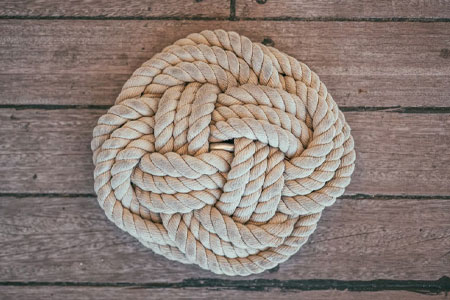
11. Leather Working
Leather goods hold up to years of use. You can create beautiful belts, bracelets, pouches, and bags out of leather. Large leather work requires quite a bit of space and larger tools, but on the small-scale leatherworking is a fun project for anyone. To get started in leatherworking, you may want to purchase a kit for a small item like a coin purse or bracelet and explore online videos and tutorials to help you get started.
12. Illusions & Cards
Magic, card tricks, sleight of hand and optical illusions are fun for many people, but they often require practice. Fortunately, this practice doesn’t require much space or equipment. You can learn by watching simple YouTube videos or taking an online course. Professional card dealers often attend classes and even go to casino gaming school, but you’ll get far with regular practice and self-study.
13. Model Building
Similarly, creating miniatures, whether for a dollhouse, terrarium or simply a display is another small-scale hobby many people enjoy. Using polymer clay or other materials they recreate and “miniaturize” everyday items.
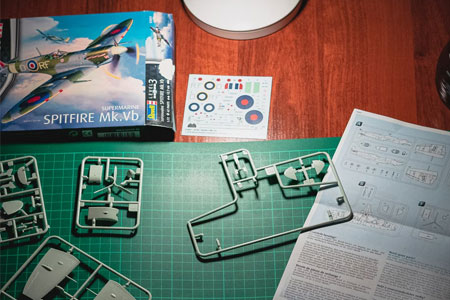
14. Music
If music is your hobby, there are many ways to adapt your creative outlet to fit in a minimal space. Singing, music writing, and many instruments are still easily incorporated into many different sized homes and lifestyles. Of course, you may need to pare down a collection of instruments (and a piano is much harder to fit in a small space than a ukulele), but many people embrace music as a hobby.
15. Nail Art
Now, I can’t speak to this personally, but I’ve heard nail art is one of the preferred hobbies for women. Painting designs as part of a manicure or pedicure requires few supplies. Your fingers and toes are your canvas and nail artists get quite into their craft—some nail artists even add jewels to accent their designs.
16. Paper Crafts
When it comes to paper crafts, it’s a hobby that can quickly take over a space. After all, paper can result in a lot of clutter. Yet, there are ways to enjoy paper craft on a small scale. Origami (the art of paper folding) is one such example. Quilling, or paper rolling is another. When pursuing a hobby such as paper crafting, it’s important to remember the seven guidelines above to keep your supplies organized and only keep the project you’re working on at the time.
17. Photography
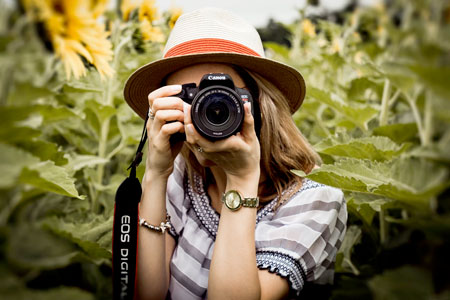
18. Puzzles & Deduction
Many hobbyists enjoy cracking codes, figuring out puzzles and playing logic games. While boxes of jigsaw puzzles may not fit with a minimalist lifestyle, there are plenty of digital puzzle games, books of crosswords, Sudoku and logic puzzles you can check out. If you enjoy forensics, check out Hunt a Killer, which is a monthly detective puzzle game.
Brain benders, meta, and wooden box puzzles are also a fun pursuit to stretch your brain and turn the gears. Rubik’s cubes and other combination puzzles will keep you occupied for hours. Similarly, lockpicking is a popular pursuit, where you apply the same techniques to locks (check out Locksport International for information on getting started).
19. Outdoor Exercise
Perhaps one of the easiest ways to pursue great hobbies is to do them outdoors. Outdoor hobbies can be split into two categories: active and leisure. On the active side, of course, the options are limitless but bear in mind, many outdoor hobbies require equipment: skiing, kayaking, golfing and so on. Fortunately, if there’s a hobby you really love, you can possibly rent the equipment to cut back on the need for extra storage.
A few outdoor pursuits that don’t require much in terms of supplies are swimming, jogging, running and hiking. Fishing, tennis, Frisbee golf, and even snorkeling is possible, provided you parse down the extra supplies you need to the bare minimum. Team sports like soccer, softball, and volleyball are other great options, where all you need are some friends and a ball to play.
20. Outdoor Leisure
Geocaching is a fun option many outdoor explorers enjoy. Geocaching is essentially a big outdoor treasure hunt using GPS. They keep a log book, recording whenever they discover an item (using GPS coordinates) in a cache. They take an item, leaving behind an item of greater value (items are typically small toys).

21. Reading
Perhaps the ultimate minimalist hobby, reading is a favorite pastime of many people. That said, books take up a lot of space. If you’re cutting back, downsizing and decluttering, you may want to sell your used books as you finish them. Other options for avid readers are using an eReader (like a Nook or Kindle) or borrowing books from the library. Check your neighborhood for Little Free Libraries as well—you can drop off and pick up books any time. If reading is your preferred pastime, you can easily enjoy it and still embrace a minimalist lifestyle.
22. Computers & Technology
Computers and technology are great hobbies for minimalists. With cloud storage, web, app and game development is possible from nearly anywhere with very little equipment. Frontend developers focus on design and user experience and generally need to learn to code (like HTML or JavaScript). Backend developers work use logic and problem solving to improve the function of an app or site, using server language like Python.
On the DIY building side, Raspberry PI is a small programmable computer that’s a lot of fun for beginners. Arduino, is a micro-controller motherboard popular in the DIY computing community. If you’re interested in computer technology, it can become an excellent and even lucrative hobby.
23. Video & Recording
Similar to photography, videography and recording works well with a small, minimalist space, provided the hobby stays on the small scale. Cameras like the GoPro Hero are used to film some really fun videos with very little extra equipment needed.
If you enjoy making videos, you could start a YouTube channel and vlog, or record tutorial videos for others (those who are camera shy, may prefer to explore podcasting instead). There are a vast number of topics and ideas for videos, so the options are endless. If video and filmmaking is high on your interest list, you could also try your hand at digital or stop-motion animation.
24. Visual Arts
Visual artists often worry they’ll need to give up their art if they move toward a minimalist lifestyle. After all, tubes of paint, easels, and brushes can take over a space pretty quickly. If art is your outlet and one of your preferred hobbies, consider drawing and sketching which are more portable and only require a notebook and graphite.
Other options for visual artists are to explore the world of graphic design. Apply your art skills in the digital world and learn to create on a computer. You could also do micro portfolio work. Artist Trading Cards (ATCs) and ACEOs (Art Cards Editions and Originals) are miniature works of art measuring 2.5” x 3.5” and they’ve become quite popular. Many artists swap them online and at swap events. The collectors market is rising for these miniature treasures.
25. Wine, Beer & Spirits
If you’re a hobbyist who loves homebrewing or the culture of beer, wine, and spirits, you may want to explore other areas of the beverage field. Wine pairing, beer tasting, and appreciation can become quite a fun and pleasurable hobby. Bartending and learning mixology is another great area of focus. Not only can you learn a (possibly) marketable skill but it’s useful knowledge for many situations.

26. Floral Arranging
Floral arranging is a beautiful and useful hobby, particularly if you enjoy growing flowers in a garden, or have access to fresh flowers. Flowers are temporary, and the arrangement is enjoyed for a while and then transitioned to a different look. The short-term aspect of flowers makes floral arranging a good option for those who live the tiny life. One place to get started is by exploring Ikebana, the traditional Japanese style of flower arranging.
27. Astronomy
Amateur astronomy doesn’t require much equipment or setup, other than a telescope and a notebook. If you live in a rural area (away from city light) this is a fascinating hobby where you can really explore the universe. Sky & Telescope is a great place to get started.
Your Turn!
- What are some of your favorite hobbies for minimalist lifestyles?






I love to embroider. I also crochet. These are projects I am prepared to add storage for yarn and embroidery thread in my tiny house, I am not going to tiny without my hobbies.
Some people store their yarn in their pillowcases!
As far as visual arts, watercolor painting takes up a lot less space than other types of painting, and less clean-up. Sculpting can also be done on a small scale, with sculpey or even small found objects. As far a Little Free Libraries go, I’m planning to attach one to the back of my own tiny house!
I live full time in a small class a motorhome. I brought with me, as I downsized, all my knitting, crochet, and macrame supplies. Recently I have found I have arthritis in my thumb joints. So now I want to find other hobbies that do not take so much thumb and wrist movement. This article has given me a few ideas. Thank you.
I love your ideas! I use to live I n the cab of a truck for weeks at a time. Many of these ideas would be a great choices! My biggest issue was that I want to have to many projects going at one time. When I get in the truck these days, I only bring 2 projects. I knita sweater and read a book.
Amateur radio
We live in a travel trailer, my husband, son and I full-time. I homeschool, knit, sew, paint, read, write and teach at a co-op so supplies for that too, all in our tiny house. Plus my hubby has tools for remodeling our tiny home and supplies. No, our home isn’t bursting at the seams but because of the remodel we do have a storage unit temporarily until it is finished. The key is to have only a small amount of supplies at a time and organizing it all.
My heart is broken as I must give up hand crafting tiny doll foods and drinks, and even my sewing because of painful arthritis. We are also moving from a nice sized home to a 55+ community with tiny rooms. Bit I love your article because it reminded me of how much I used to enjoy jigsaw puzzles, crossword puzzles and I am a former voracious reader. So I will step back into new “old” enjoyments and get over my whining!
Fran,
What a good attitude! And maybe you can join a book club in your new community. Part of the Tiny House mindset is to not stay cooped up in your own little box. Get out and meet your new neighbors! Best wishes and prayers for a happy and healthy transition.
Hi there,
I really enjoyed your post. Very informative!
For me the most interesting is woodcarving, so I just stay home and carve some woodcarving projects.
need a supplier for blinking red lights. AS I BUILd Rudalf the red nosed rain deer that has bliking red nose on them. My old supplier no longer makes them.
Set of Alternative Linksbo Backlinks
Today is increasingly developing, making it simpler for people to entry computerized networks.
Till now there are several online gambling games that may
be played by anybody online. Therefore, betting lovers no longer need to go to the
particular casino to try out wagering, this is quite easy for them to
play anytime and anywhere without limits.
Hobby or addiction?
Human or bot comment?
So many questions…
Generally, crops are cultivated in soil. But continuous cultivation of crops in soil has resulted in poor soil fertility, reduced the opportunities for natural soil fertility build-up by microbes. This situation has to lead to poor yield and quality. Also, conventional crop growing in soil (Open Field Agriculture) is difficult. As it involves large space, a lot of labor, and a large volume of water and in some places like metropolitan areas, the soil is not available for crop growing.
https://bit.ly/Hydroponics-Soil-lessCulture
I like to write and thinking to start my own blog. I use to write and draw in free time l. For me these are the best way to spend time.
I like to write and thinking to start my own blog. I use to write and draw in free time l. For me these are the best way to spend time.
paperless genealogy
I have loved the Tarot for more than 50 years—not the English style decks you commonly see in bookstores in the US, but the classic European Tarot de Marseilles-type non-scenic pip decks that were once block-printed.
Reproductions of these historic decks (mostly in museums) are now available and affordable over the internet. There are relatively few and they are fun to collect and study. Books about the European Tarot are hard to find, so I took early retirement to write one. Visit ArcanaPress.net to learn more.